15 Most Popular Content Management Systems (CMS) 2024
Here you will find all the most popular content management systems (CMS) you can easily use to build and manage your website.
When building content-focused websites, opting for a CMS is the best option.
Having a custom website developed without a solid maintenance budget for the future can greatly affect your business operations in the long run.
In contrast, today’s content management systems are open-source and easily maintainable, not to mention free.
This roundup focuses on the best and niche platforms in markets like eCommerce.
W3Tech content management system report suggests that the top three CMSs are accountable for over 70% of total CMS usage across all websites.
You can learn more about the other types of content management systems out there using this site.
List of most popular content management systems available today:

Best Content Management Systems
- WordPress: Beginners and pros enjoy using WordPress for its amazing flexibility.
- Shopify: Shopify offers you everything you need to run an online store easily.
- Wix: Wix creates a great atmosphere for small-to-midsize businesses.
- Joomla: Joomla is perfect if you have some experience with web development.
- Drupal: Drupal gives you access to numerous features for building custom web platforms.
- Adobe Commerce: Adobe Commerce is ready for eCommerce at scale.
- Blogger: Blogger is the simplest platform for starting a simple blog.
- Contao: Contao supports medium and large business websites.
- Craft CMS: Craft CMS is for crafting larger websites with custom functionality.
- Fork: Fork is ideal if you’re a beginner or expert building small-to-medium-sized biz sites.
- Umbraco: You go with Umbraco when you need a lot of website customization.
- Silverstripe: Silverstripe is advanced enough to fit small and larger projects with custom work.
- TYPO3: TYPO3 is exclusive to the largest websites (corporations).
- vBulletin: vBulleting is a CMS for establishing a website with a community.
- Liferay: Liferay offers you the tools to create the best (custom) digital experience (even in eCommerce).
What Is A CMS Platform
A CMS or content management system platform allows you to easily build, manage and maintain a website without the coding work.
You can do edits and customizations at free will without writing a single line of code.
That’s why a CMS is the most beginner-friendly way of building a website. However, many advanced users prefer a CMS because of its flexibility and custom code support.
The options and possibilities are endless.
How To Choose The Best CMS Platform For Your Website
While there are many CMS platforms, we created this extensive collection to help you choose the right one quickly.
But these are some features you should look for when selecting the best CMS platform. (These were also some ranking factors when we were conducting this list.)
Usability
It’s essential to seek a CMS that’s easy to use and accessible to all users.
That’s when the drag and drop technology comes into play, allowing you to quickly add, remove, replace and modify elements of your website (and its internal pages).
There’s no need for skills and experience!
Design flexibility
Having an option to choose between predefined templates is a huge advantage when choosing the best CMS for your business.
A ready-to-use design speeds up the creation of your website because you don’t really need to build it from scratch.
Your customization tweaks are all that’s necessary and you’re good to go.
Extensions & integrations
But because different businesses need different features, you will rarely find an out-of-the-box solution, regardless of how good the CMS is.
That’s when extensions and integrations come into play. They help you add practical features to enhance your website and boost user experience.
And that’s why it’s necessary to pick a CMS compatible with various add-ons to add as many (new) features to your page as you want.
Scalability
Extensions and integrations are part of scalability because the bigger your business gets, the more features you’ll need.
While scalability will be part of your business journey, it’s also a must to go with a content management system that handles large volumes of traffic, transactions, opt-ins, whatever!
Luckily, any of the below platforms handle small, mid and large businesses comfortably.
Great support
While the great design, the features and the ease of use are fantastic, a CMS without great support is like a pizza without good sauce.
Yes, quick support, frequently asked questions, documentation and online knowledge base are OH SO rewarding when you work with a CMS. This especially applies if you’re a beginner using a CMS for the first time.
Having someone you can rely on while building and managing your website feels good.
Cost
While many CMSs are entirely free of charge, others come with a subscription.
Remember, even when you choose free software, you may need to pay for a domain name, hosting, extensions and themes you’d like to use to make your website exactly the way you want.
These are usually small investments (sometimes free) but can take your online presence to the next level (saving you A TON of time!).
The following list of the most popular content management systems has been gathered thanks to data from some of the leading analytics platforms on the web.
We have ensured that there is enough variety so that anyone can find the perfect solution.
Best and Most Popular CMS Plaforms
1. WordPress
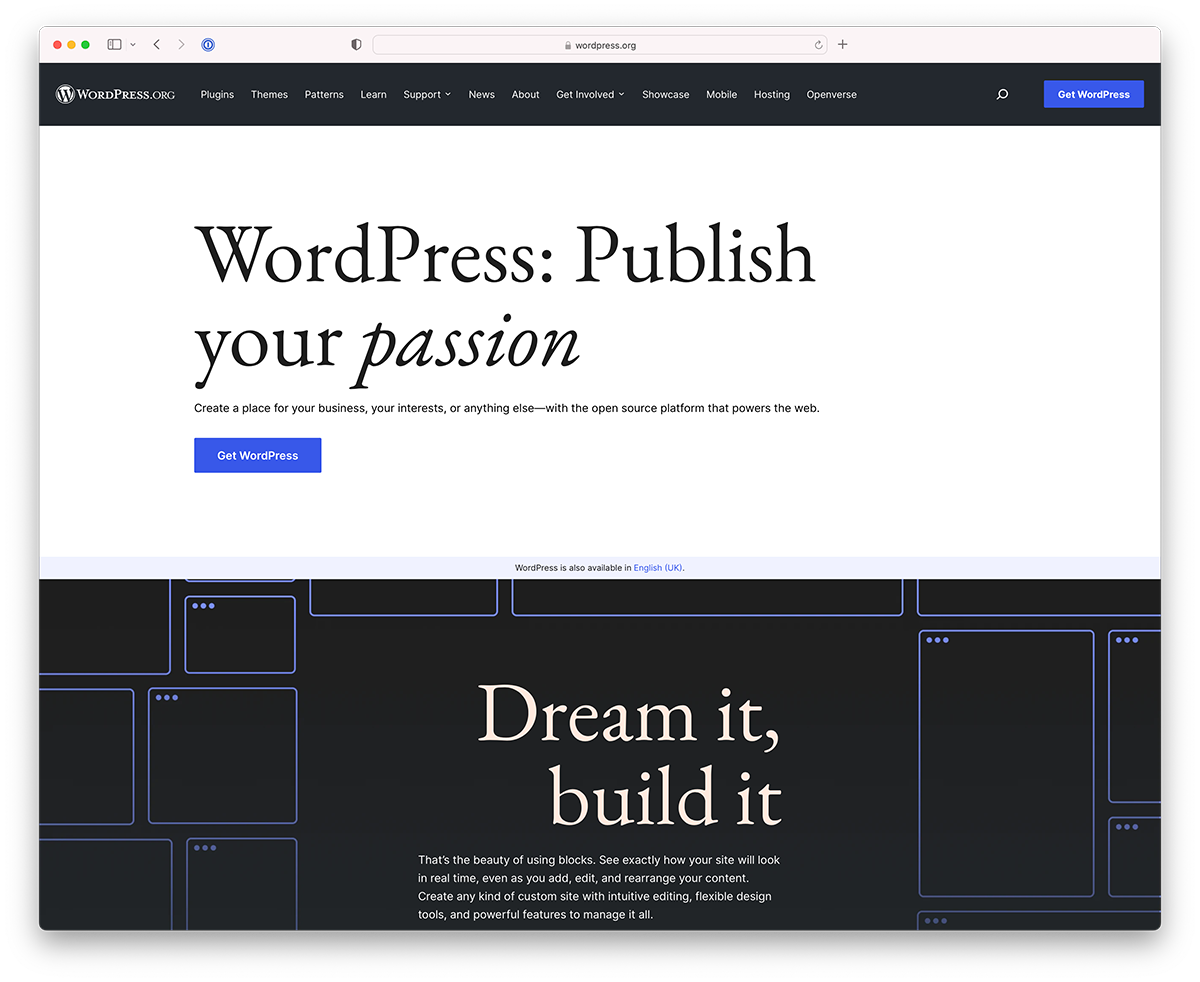
WordPress is the ultimate publishing platform and CMS for the web, a household name in the content management system market. It is a completely free and open-source CMS.
Fun fact: WordPress powers around 43% of all websites.
Sites of all sizes rely on WordPress to help publish, manage and organize the content of a wide variety; articles, tutorials, photos, videos, stories, etc.
WordPress is easy to learn and highly flexible for beginners and experienced users. The public plugin repository has approximately 60,000 free plugins, while the public WordPress theme database has nearly 10,000 styles.
WordPress has become the standard for a website that’s both functional and pleasant to browse.
Startups and mobile applications have long transferred to WordPress for their website needs, not only because of the wide variety of styles available and the ease of design flexibility but because WordPress is secure, reliable, and easy to work with.
WordPress users can build a site of any context; eCommerce, business, creative, community, non-profit, etc.
Pros:
- WordPress can be used to build any website. (This includes Blogs, online stores, membership sites, marketplaces, app showcases, and more.)
- Thanks to its codeless, block-building process, you don’t need any experience to work with WP.
- You can choose from 1,000s of free and premium themes and plugins. This allows you to add any element, feature and effect you want in a few clicks.
- WordPress sites are mobile-friendly and easy to optimize for search engines (thanks, plugins!).
- It’s open-source software that is great for learning, and developers are expanding its functionality.
- Easy content creation for bloggers. But you’ll enjoy the quick process of creating an online portfolio and adding items to sell, too!
- Amazing support community that guarantees to find quick answers to just about any question you have.
- Regular updates ensure that WordPress constantly evolves, adding new features and fixing bugs.
Cons:
- While updates are great, they can sometimes break your websites (in case the theme and plugins you use aren’t compatible with the latest version).
- You need to purchase a domain name and hosting.
- Security and optimization are on you.
Best for: WordPress is a great solution for beginners, especially bloggers. Its extensive functionality also makes it great for advanced websites (eCommerce).
Pricing: You can use WordPress free of charge. The main two costs will be a domain name and hosting. We also recommend choosing a premium WordPress theme because it offers many more features and saves you a lot of time (compared to a free one).
2. Shopify (eCommerce)

Shopify is one of the most popular eCommerce CMS platforms that focuses on helping freelancers and small businesses. It’s also an excellent solution for corporation-size companies that need reliable and secure eCommerce website builder software.
Shopify has existed long enough to be respected as a leading eCommerce content management platform.
It’s also home to several million community members who actively use Shopify to sell, buy, and trade products. Shopify works beautifully with any device, ensuring a fantastic shopping experience.
Besides, Shopify offers a range of designs to optimize your business website however you want.
Pros:
- Excellent payment options are integrated into the platform itself. Including credit cards, PayPal and others.
- Many apps and extensions to add the functionality you need.
- Fantastic (24/7) support through various channels, like live chat, email, phone, and more. Or you can flip through the available documentation to get familiar with everything you need. (Shopify’s Tutorial section is also very handy.)
- Building an online store takes little time and no coding and design experience.
- Multiple ready-to-use themes take away a good chunk of time when setting up your eCommerce website.
- Abandoned cart recovery is available on all plans.
- Easy to set up discount codes, gift cards and customer segmentation.
- Take advantage of POS in-store on all three Shopify plans.
Cons:
- Shopify could have more free themes available.
- You can end up paying a lot (for apps) to run your website if you require a lot of features.
- But you can be limited because Shopify has fewer apps than WordPress.
- Transaction fees apply.
Best for: Shopify is for everyone (beginner and expert) ready to sell products online, even for brick and mortar.
Pricing:
- Basic ($29/mo): Basic reports, 2 staff accounts, 4 inventory locations, international domains
- Shopify ($79/mo): Professional reports, 5 staff accounts, 5 inventory locations, local payment methods
- Advanced ($299/mo): Custom reports, 15 staff accounts, 8 inventory locations, duties and import taxes
3. Wix
Wix is one of the most popular website builders, with millions of users worldwide. It is considered CMS but not a standalone CMS, meaning you are tied to their service.
This makes it much easier to set up and use than most, but it might become pricy when your business and traffic grow. Yup, it’s one of the best website building software for beginners.
It is excellent service, but remember to stay under the Wix roof. Thus, we recommend using Wix for smaller projects.
Pros:
- 800+ ready-to-use templates for a broad range of different industries and niches.
- Amazing flexibility when customizing your website, tailoring it to your needs precisely.
- Unique design, animations and heaps to elements to make an attention-grabbing website.
- Wix’s artificial intelligence (ADI) assists you in creating your online presence, saving you a lot of time.
- Very detailed page builder.
- Flexible mobile app to give you access to your website anytime.
- Thanks to Wix’s Velo platform, you can use code to build custom work.
- The app market is packed with practical extensions covering services, marketing, lead generation, analytics, and more.
- Quick logo maker for your professional needs (but only for VIP users).
Cons:
- Switching from template to template is not possible. But you can customize the one you choose.
- Loading speed could be better, particularly on mobile devices.
- The cheapest plan doesn’t remove Wix ads.
Best for: We recommend Wix for small- to medium-sized businesses and freelancers who need to build a quick but professional website.
Pricing:
- Connect Domain ($4.50/mo): 1GB bandwidth, custom domain, 500MB storage space
- Combo ($8.50/mo): 2GB bandwidth, free domain for 1 year, removes Wix ads, 3GB storage space
- Unlimited ($12.50/mo): Unlimited bandwidth, Free SSL certificate, 10GB storage space, 1-hour video stream
- VIP ($24.50/mo): Unlimited bandwidth, logo maker, social media, 35GB storage space, analytics app
- Ecommerce & Business Plans: These range from $17/mo to $35/mo, offering various features (for scaling).
4. Joomla!
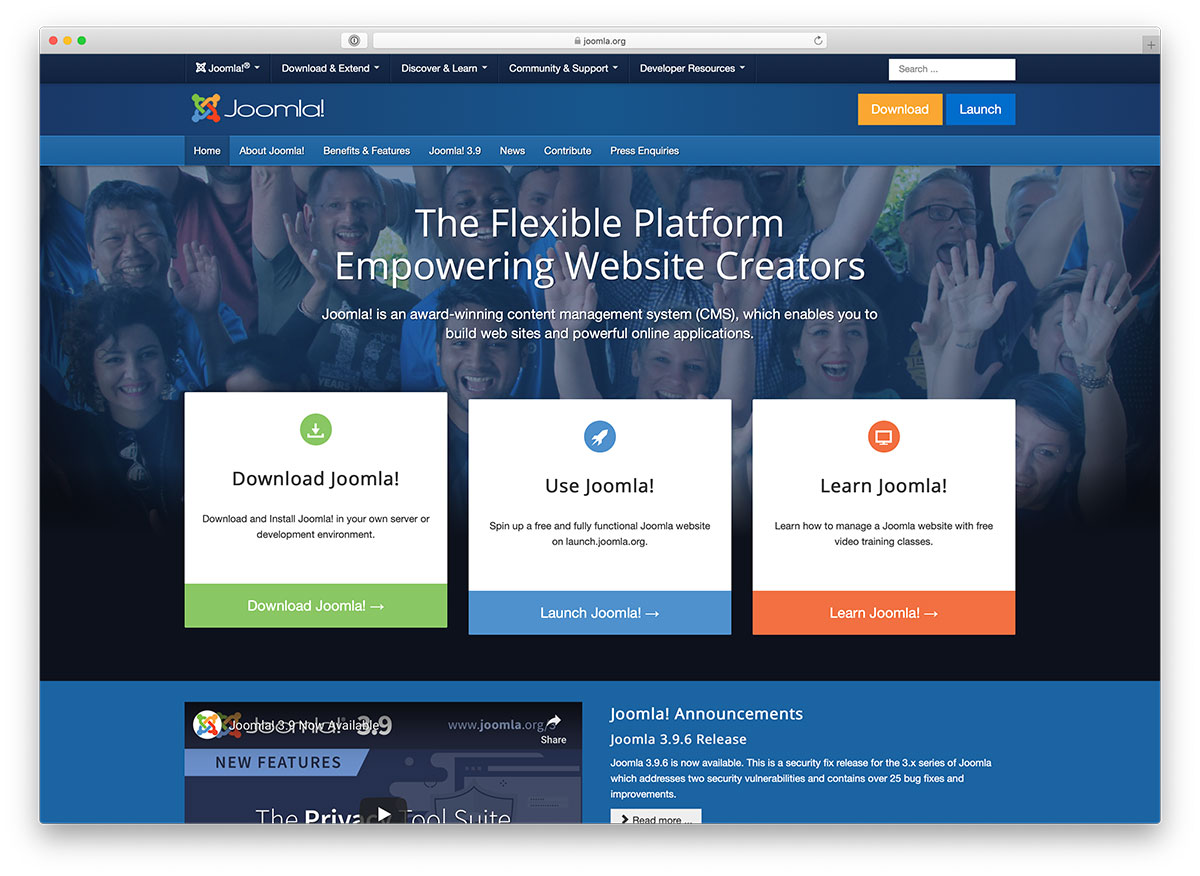
Joomla is for those looking for a challenge in content management, at least in terms of coding power.
It’s codebase is much more sophisticated than WordPress, but it benefits from more scalability and back-end integration.
In many ways, the developers built Joomla with medium- to large-sized sites in mind.
Many of the people I know who use Joomla are quite fond of features like native front-end content editing, content management flexibility, and native integration of multiple languages, which make the site’s content more friendly to foreign visitors.
Pros:
- It offers you amazing design and customization flexibility as an open-source platform.
- Even though you need more experience working with Joomla than WordPress, it’s still beginner-friendly.
- Joomla is really good when it comes to search engine optimization.
- You get great performance management to offer user’s excellent experience.
- The eCommerce solution you get is very powerful, with everything needed to run an online store.
- 10,000+ templates and extensions (covering everything you need).
- Easy and quick installation and setup.
- We also like the effortless 1-click updates that keep your website fresh for years to come.
Cons:
- Using Joomla can become very complex (but its support is very good, so you can always reach out with any questions).
- You may pay for a plugin that you later realize you don’t need (because there’s a free version).
- You can spend a lot of time researching instead of building your website.
- The templates could have more functions and practicality.
Best for: Joomla is the perfect platform for advanced developers and website creators (who need more extreme flexibility).
Pricing: Joomla is free, but you must pay for a domain name and host like WordPress. Also, you can expect additional fees when getting premium templates and plugins.
5. Drupal

Drupal goes even deeper into the architecture of the content management system itself. Because of how widely it is adopted by professional coding standards, many engineer- and developer-type webmasters have adapted Drupal as their primary content management platform.
It offers more than 30,000+ extendable modules to bring your site to a new level. You can also choose between 2,000+ themes that help build the site you’ve always wanted to own.
Thousands of members participate in daily forum discussions, so finding support for Drupal is not a problem. But there are resources available that can solve your problem without visiting the community forums, which will prevent you from finding support in many cases.
Pros:
- Like WordPress, Drupal is an open-source platform you can use at free will. You can play with the code and make as many edits as possible.
- Frequent updates and improvements that keep the platform running smoothly.
- Various support channels offer fast assistance regardless of what help you need.
- Fantastic performance and easy to scale your online business to the next level.
- The total building time between starting and finishing building a website with Drupal is short.
Cons:
- It’s better not to use Drupal if you’re not tech-savvy.
- Security lacks functionality.
- You can’t use Drupal and its features out of the box.
Best for: Any website, but Drupal is a more advanced platform that fits experienced users.
Pricing: Drupal is a free content management system that features free and paid templates and extensions. You may also need to hire a developer that can eat a big chunk of your budget.
6. Adobe Commerce (ex Magento)
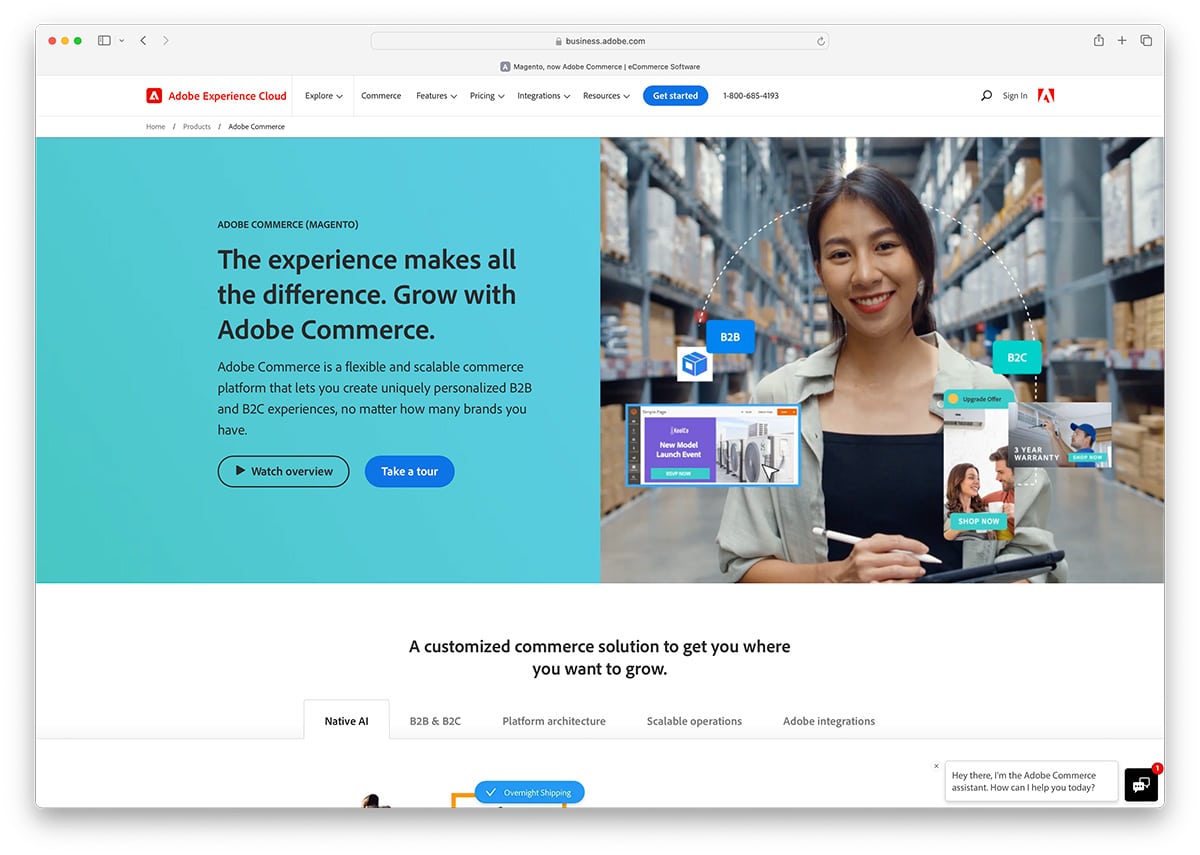
eCommerce is a market in itself. We must realize that for some of our eCommerce tasks, perhaps the best choice is to opt for an independent eCommerce platform altogether, and one such platform is Adobe Commerce.
Whether you’re looking for a small business solution in an environment where nobody understands technology or you’re working for a corporation that needs a professional eCommerce solution, Adobe Commerce is likely to be a choice that won’t disappoint you.
Companies like HP, Rossignol, and FoodServiceDirect are just some clients using the Adobe Commerce platform.
Pros:
- The practical drag and drop page builder makes website and content creation easy.
- Various tools ensure a great building and managing experience for everyone.
- Adobe Commerce supports B2B, B2C and adding multiple languages.
- The built-in AI saves additional time with automation, data analysis and updates.
- Easy to scale and incorporate with new functionalities, thanks to its module core and headless capabilities.
- Multiple payment solutions for any-size online store.
- Ready-to-use integrations for adding new elements and features.
Cons:
- Adobe Commerce is predominantly for serious business owners.
- Its custom pricing can be extremely pricey (need to fill out a form to get pricing).
Best for: Adobe Commerce is best for established eCommerce businesses with large budgets.
Pricing: Custom pricing applies that’s unique to each business’s needs.
7. Blogger

Blogger has evolved drastically over the years. But, it keeps its legacy of being a blogging platform.
Developers utilize it as a content management system in more ways than one. In recent years, they have introduced much more flexibility in how you can style Blogger sites.
This means photographers, foodies and creatives have more room to build a content platform that suits their needs.
Blogger is part of Google and offers a range of features, such as custom domains, styles, and customization options.
Pros:
- Very easy to set up (user-friendly interface) a blog with your Google account.
- Free of charge.
- Predefined templates that you can use for your project.
- You can select from many free tools to add to your blog.
- Hosted by Google.
- Images and content are stored in your Google Drive.
- Free SSL certificate.
- Can use it with a custom domain
Cons:
- Not the best to build an authority site.
- Lacks customizations.
- No FTP access.
Best for: Someone who wants to start a simple blog with a Google account.
Pricing: Blogger is a free solution for bloggers in any niche.
8. Contao

With Contao, you are on the right track to creating unique websites and web applications.
It is an open-source CMS that gets you going in no time. The features of Contao are numerous, making sure you get the most out of it when working on your project.
With that in mind, Contao has top-notch editing features, an amazing site structure, a form generator, responsive images, a built-in file manager, and more.
It is also GDPR compliant, comes with drag and drop technology and is secure and stable. You can also check multiple case studies to understand what is possible with Contao first-hand.
Pros:
- Many functions for your exclusive web project.
- Various extensions for quick integration.
- (Long-term )Support and documentation.
- Translatable and multilingual-ready.
- GDPR compliant and optimized for SEO.
- Contao Manager ensures installing and managing the platform and your website with ease.
Cons:
- Template integration can be a challenge.
- Getting used to the back- and front-end can take a little while.
Best for: Medium and large online projects, thanks to its versatility.
Pricing: Contao is free to download and use.
9. Craft CMS
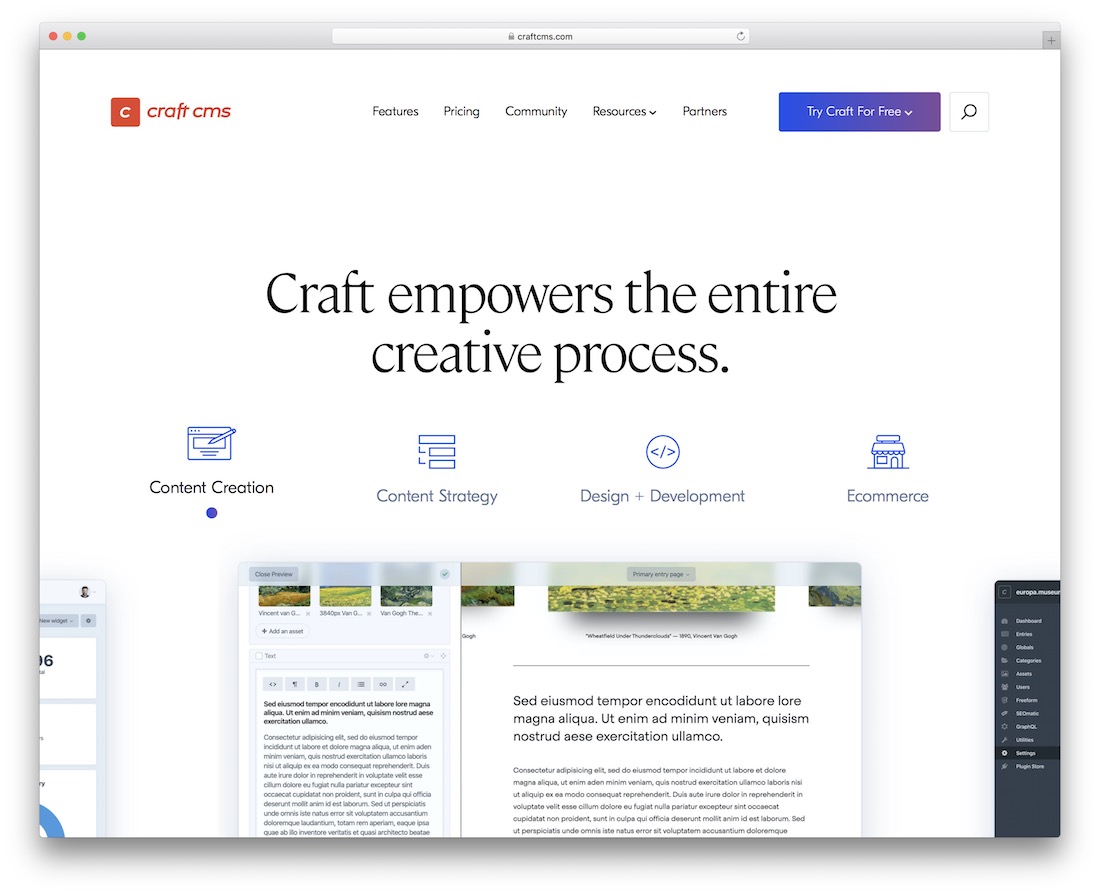
Craft CMS offers you the freedom you deserve when building a website for yourself or your friend.
Not just that, you can create all kinds of websites, including eCommerce. However, it all depends on the package you go with.
After all, the free forever plan is quite limited. Still, it offers you tons of material to start the page establishing process immediately.
Localization, 3rd-party plugins support, instant updating, templating, you name it, all this and more comes as part of Craft CMS.
Designing the website and content creation from one location on the powerful and resourceful Craft CMS doesn’t take long. Take things to your absolute advantage and start online like a champ.
Pros:
- You get the necessary functionality to create a website specific to your project.
- Drag and drop editing so everyone can build epic things without the coding knowledge.
- Quick content creation, edits and updates (it supports multiple users to work on the content).
- It supports all the elements of an online store.
- Amazing developer’s toolkit so you can build a completely custom version.
- Your website will be automatically optimized for speed.
Cons:
- Configuring some of the stuff in your Craft CMS can be a little complex (requiring experience).
Best for: Building custom websites of a larger scale. (But it also works great for small- and medium-sized ones.)
Pricing:
- Solo (Free): Simple website, flexible content configuration, front-end tools, localization
- Pro ($299/project): Unlimited user accounts, content previews, system branding, developer support
- Enterprise (custom pricing): For custom web projects, priority technical support, custom licenses
10. Fork

Fork is another terrific alternative that will help you build your website. You’ll do it, but Fork is a top foundation that will simplify the process.
Fork is a content management system that makes an immediate difference. The user-friendly interface ensures that both beginners and professionals profit from it.
Amazing collections of apps, predefined themes, marketing solutions, and other goodies are available when working with Fork.
You can also test things out by accessing the live back- and front-end demos.
Pros:
- The user-friendly interface is for everyone (it really is!).
- Many practical and easy-to-integrate apps/plugins.
- Google Analytics integration.
- SEO optimized by default (performance is terrific, too!).
- Built-in marketing tools.
- Quick to customize with your creative tweaks.
Cons:
- Templates can be limited in terms of item inclusion.
- Basic design.
Best for: Anyone (beginner and pro) in the small- to medium-sized business field who requires a user-friendly environment at every step of building their website.
Pricing: A free CMS (you can also try the live demo first).
11. Umbraco

Managing and maintaining a website has never been as effortless as today. Umbraco’s amazing flexibility and extendability make it one popular CMS that will do you well.
You can utilize Umbraco’s open-source version free of charge.
But the installation, setup and hosting are entirely up to you. Of course, you can also let Umbraco take care of it; however, that comes at a fee.
Three different packages are available – just in case (more below). If you are unsure how things operate, you can also book a demo, which will help you get the gist of it.
But you will have a breeze employing this content management system anyway.
Pros:
- Great content management and media section.
- Very secure.
- Easy code editing.
- Umbraco Cloud hosting.
- App marketplace with many great extensions.
- Smooth integration with 3rd-parties.
- Umbraco grows when you grow, keeping you running at all times.
- TLS certificates.
Cons:
- Expensive premium plans.
- Need to be a coder for any custom work.
Best for: Medium- to large-size businesses that need a lot of customization. (Free plan not recommended.)
Pricing:
- Free: For someone who doesn’t need support (but lacks features).
- Professional (6,000€/year): Medium complexity, one site, onboarding program.
- Enterprise (Custom pricing): High need for customization, multiple sites, bug fixes, code review.
12. Silverstripe

This CMS is open-source and easy to use, even for newbies in web development.
Silverstripe is compatible with small and large projects, so it does not limit you in any way, shape, or form. Moreover, Silverstripe is very stable and operates without a hitch.
You can download the software immediately; however, you can also try it first and then proceed from there.
The live demo allows you to build a test project, so you see how well it fits you. (A link will be sent directly to your email after you complete the information.)
Enjoy the powerful features and functions of Silverstripe now and stand out from the masses.
Pros:
- Great solution for developers but equality cool for beginners.
- Completely open-source so that you can tailor it to your needs.
- Multilingual solution.
- Top-notch design flexibility through JavaScript, CSS and HTML.
- The interface is simple and user-friendly for a comfortable working experience.
- Great documentation and step-by-step guides.
Cons:
- It has a small community, which can cause difficulty finding answers to unique problems.
- Not the best CMS for non-techies.
- No free trial.
- Expensive.
Best for: Small and large web applications that need custom work.
Pricing:
- Solo Multi-AZ ($425/mo): 150,000 page views/month
- Small ($775/mo): 500,000 page views/month
- Medium ($1,825/mo): 2,000,000 page views/month
- Large ($3,250/mo): 6,000,000 page views/month
- Enterprise (Custom pricing): 6,000,000 page views/month
13. TYPO3
Open Source Enterprise Content Management System
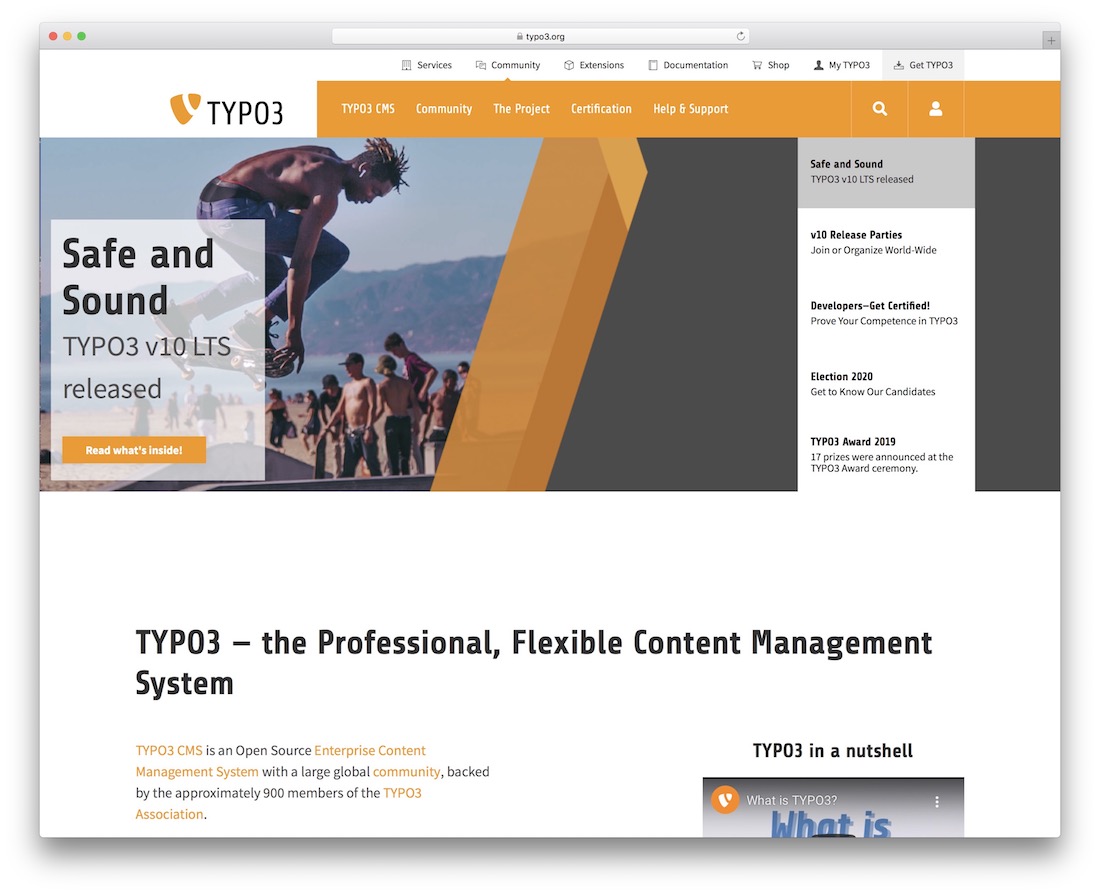
The biggest argument about TYPO3 versus other content management systems is that TYPO3 has been built exclusively to serve sites of a much larger magnitude and be a native content management platform.
In contrast, platforms such as WordPress are traditionally considered native blogging platforms.
TYPO3 is popular amongst corporate websites, thanks to its integration of features that would otherwise require extensions or plugins.
We all know these slow down the site and overall performance, but TYPO3 integrated them for you. The developers made TYPO3 highly flexible, so you can also extend it using new functions (without writing code).
Pros:
- It is an excellent solution for the biggest websites.
- Supports web projects with multiple websites and languages.
- Secure scalability to any magnitude.
- Built-in marketing campaign management.
- Out-of-the-box data privacy and GDPR.
- One of the longest-running CMSs.
- 1,000s of extensions (but also supports 3rd-party apps).
Cons:
- Relatively small community.
- Custom work requires experience (but content management is simple).
Best for: Large websites and web projects (corporations).
Pricing: There are no fees to download and use TYPO3. But you can order a Higher Education Package, priced according to your needs.
14. vBulletin – Forum CMS
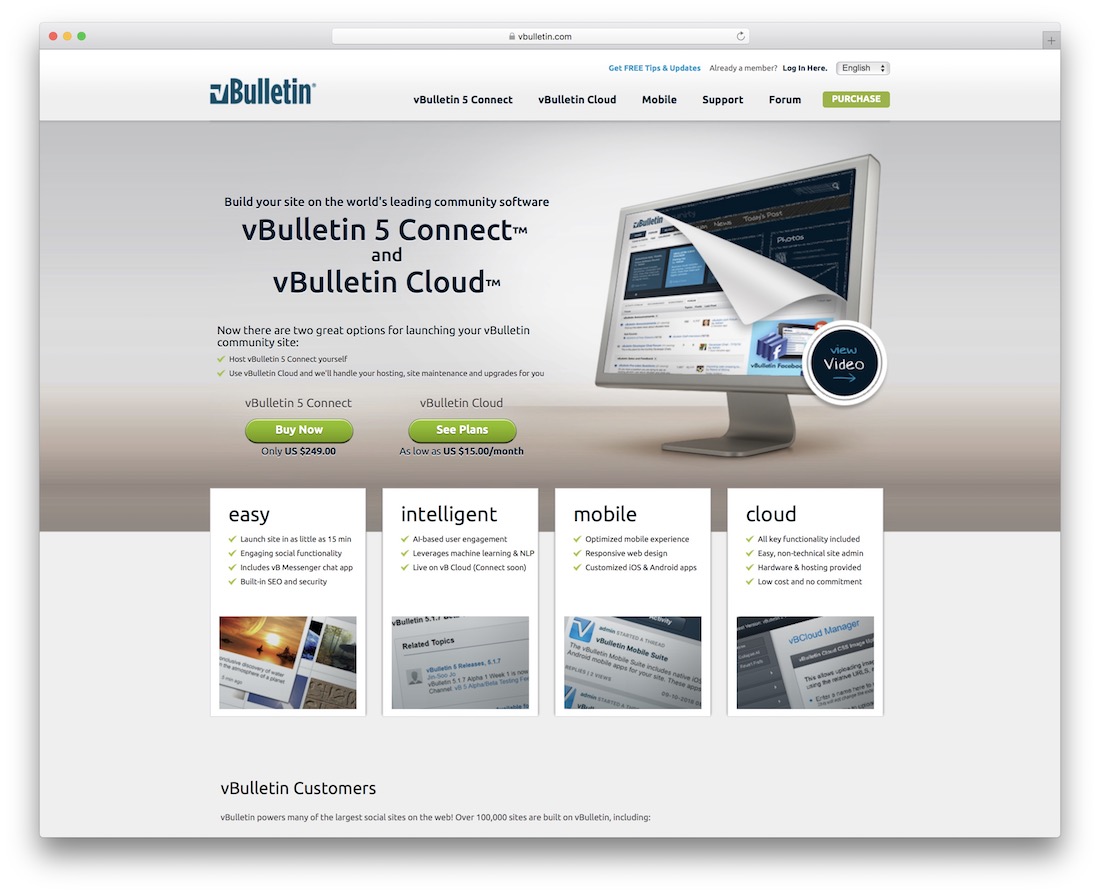
vBulletin used to be just a forum platform. But they switched from traditional forum community services to a more content management-oriented platform.
It still features a lot of community involvement through native forum functions.
Those who wish to build a community around their content should consider vBulletin as one of the top choices.
It is secure, and the team behind this platform has over a decade of experience building platforms. It also supports some of the largest communities in the world (like EA, Nasa, Sony Pictures, etc.).
vBulletin is the perfect platform for webmasters who want to create a lot of content with community help.
Pros:
- Quick and easy setup (takes approx. 15 minutes).
- Improved code for better performance.
- Easy-to-understand admin panel.
- Many great forum and message board functions.
- Post scheduling and easy article publishing.
Cons:
- Lacks predefined themes.
- Not too many add-ons.
- No free trial or money-back guarantee.
- Pricey.
Best for: Building a web project to create and establish a (large) community.
Pricing:
- vBulletin 5 Connect ($249): Free forum support, 1-month ticketing support
- vBulletin 5 Connect + Mobile Suite Bundle ($399): iOS and Android apps
- vBulletin Cloud ($179.99/year): Hosting for your vBulletin website
15. Liferay

Liferay is a fairly new player in the CMS game but is already home to 1,000s customers (including Honda, Airbus and U.S. Bank).
The customers enjoy building unique websites, customer portals, membership sites, and content resources for various needs.
Liferay’s modern approach to design and technology has enabled them to attract their audiences and enjoy steady growth.
Pros:
- A personalized digital experience exclusive to your audience.
- Self-service solution for your users.
- Great business-to-client (B2C) relationship.
- Ensures flexibility and scalability.
- A large marketplace of applications (free and premium).
Cons:
- Customizations aren’t newbie-friendly.
- Could have better documentation.
Best for: Building a custom digital experience (including eCommerce) that’s exclusive to your business needs.
Pricing: Liferay doesn’t offer out-of-the-box pricing. You need to talk to their sales team so they can prepare a custom package for your business needs.
Which Is The Best CMS Platform?
After years of experience working with WordPress (and many WP alternatives) on endless projects and web apps, we choose it as the best CMS platform.
It also powers more than 43% of the web, so it must be doing something right! (We all know it is.)
Getting started with WordPress is quick and effortless, great for beginners and professionals.
The cost of starting is also low. If you choose a free theme and free plugins on your initial launch, your only cost will be picking the best WordPress hosting (never go with free hosting services!).
Hint: We recommend you pick Bluehost because of its excellent compatibility with WordPress.
And when it comes to building websites, you can do whatever your heart desires with WordPress. Build eCommerce sites, membership platforms, education sites with LMS, digital marketplaces – yup (!), whatever you want.
Of course, WordPress is still the most common in the blogging space, fitting any niche you’re passionate about. (Don’t miss our best free WordPress blog themes collection.)
Frequently Asked Questions About CMS
We also put together a quick FAQ because we regularly receive questions about CMS (and these are the most common).
Which is the best eCommerce CMS platform?
The best eCommerce CMS platform is a combination of WordPress and WooCommerce. This free combo can quickly get your eCommerce website up and running (without coding and design skills), and online store owners love it!
Which is the best small business CMS platform?
WordPress is the best small business CMS platform because of its simplicity and extendability. With ready-to-use themes, you can explore any industry and niche, saving time.
Do I need a CMS to start a blog?
Yes, a CMS must create a blog and share content online. Despite the endless solutions available to bloggers, we still suggest you opt for WordPress because managing and maintaining a blog is easy peasy.
Does CMS work without a domain name and hosting?
Yes, a CMS does work without a domain name and hosting, but only during building your website. You will need a domain and a hosting service when you want to go live. Sure, you can go with the free version (which gets you a sub-domain – doesn’t look pro), but don’t if you are serious about your business – go with paid domain and hosting instead!
How many types of CMS are there?
There are generally five types of CMSs available: web content management systems (CMS), open-source CMS, enterprise CMS, software-as-a-service content management systems (SaaS CMS), and proprietary CMS.

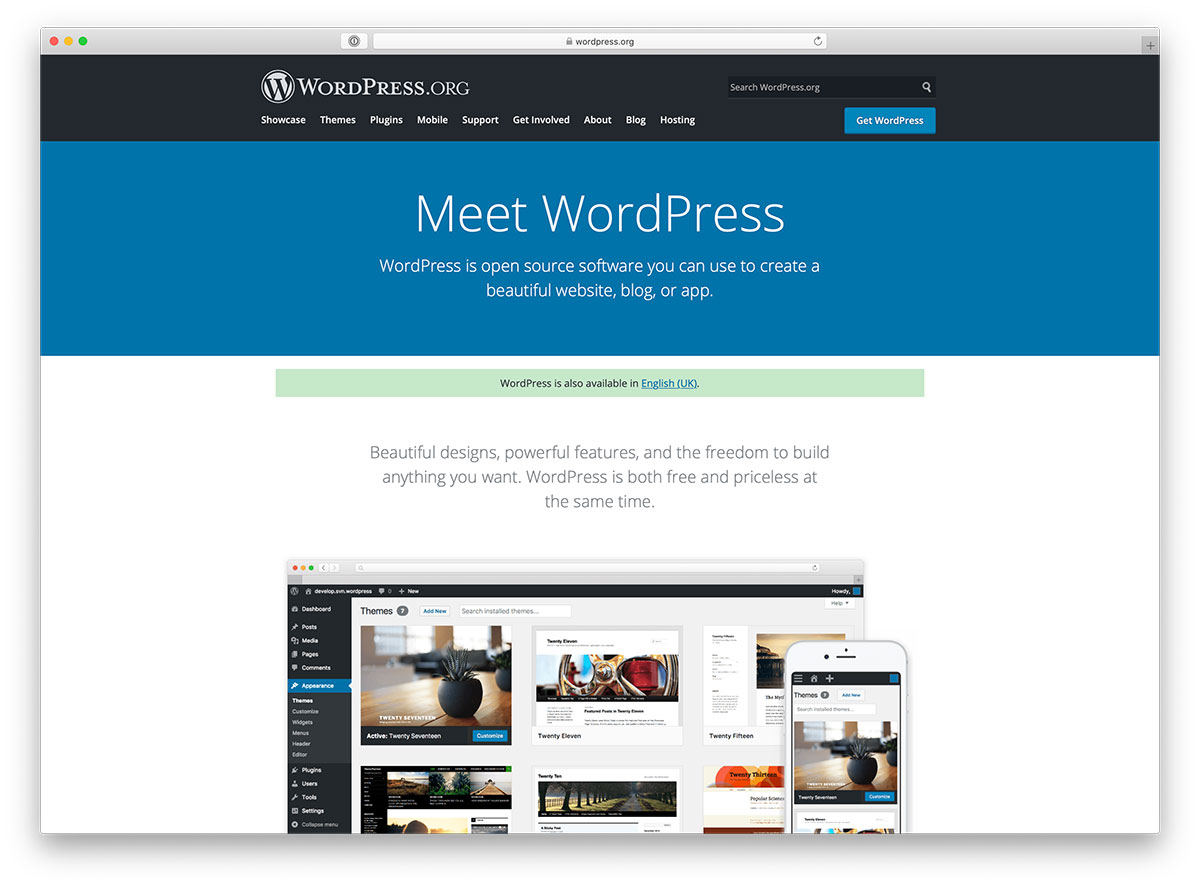
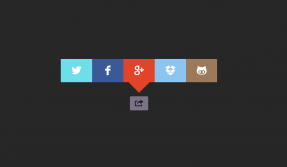

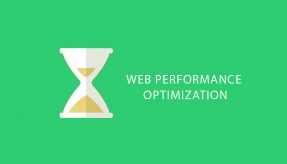



Popular does not mean the best:)
A big missing CMS from this list is DNN. Sure it runs on Windows Servers, but it is open source, and has over 1 billion users. Its a pretty amazing framework.
IS DNN WORK LIKE WORDPRESS OR JOOMLA CMS
personally wordpress is the easiest way to build website
Sir please help me. WordPress is taking more ram & wordpress is too slow. Please suggest me any light cms. Please reply, I bookmarked this post and I will check latea.
Sharma,
Make sure to implement a proper cache and your RAM and CPU usage will drop tenfold. WordPress when used right is not resource heavy but you need to make some tweaks. The best WordPress cache plugins are compared here.
Thank you sir
For every blogger or business enterprises, the best platform to reach to its target audience is to work on WordPress. WordPress CMS development is simple to understand and is pocket-friendly for every type of business enthusiast. If we go through the statistics, according to the Web technology survey it shows more than 40% of the web is powered by WordPress.
I found 4 amazing CMS which are open source and not in this list.
1 – October CMS ( Laravel cms )
2 – Pagekit ( VueJS CMS , Ease and Fast )
3 – Cockpit CMS ( No frontend / Form based API )
4 – Bludit CMS ( Easy API )
And I want to add another one:
5 — b2evolution CMS ( social CMS, also includes Forums )
True, most often free editors are such a pain .. You have to make a lot of changes, that you often have to use third-party editors to facilitate and speed up the process of editing text after inserting it into the editor. And all this affects the promotion of tests in the search engine.